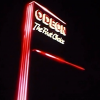| Welcome, Guest |
You have to register before you can post on our site.
|
| Forum Statistics |
» Members: 5,968
» Latest member: Zanneti
» Forum threads: 6,034
» Forum posts: 86,378
Full Statistics
|
| Latest Threads |
Films that used silver re...
Forum: Official and unofficial releases
Last Post: Eyeswideshut
1 hour ago
» Replies: 32
» Views: 42,100
|
25fps to 24fps software t...
Forum: Audio and video editing
Last Post: emy54
2 hours ago
» Replies: 65
» Views: 68,208
|
Once Upon a Time in the W...
Forum: Released
Last Post: Stamper
9 hours ago
» Replies: 6
» Views: 1,236
|
The Matrix UHD regraded t...
Forum: In progress
Last Post: emy54
Today, 07:39 AM
» Replies: 3
» Views: 131
|
LaserDisc Commentaries NO...
Forum: Official and unofficial releases
Last Post: ustabora
Yesterday, 11:59 PM
» Replies: 37
» Views: 45,899
|
Superman (1978) - Isolate...
Forum: Released
Last Post: velocity
Yesterday, 11:42 PM
» Replies: 2
» Views: 1,304
|
Titanic (1997) Cinema DTS
Forum: Requests, proposals, help
Last Post: emy54
Yesterday, 09:49 PM
» Replies: 0
» Views: 41
|
stwd4nder2 Audio Syncs
Forum: Released
Last Post: emy54
Yesterday, 09:22 PM
» Replies: 87
» Views: 67,596
|
Hi everyone!
Forum: Presentation
Last Post: emy54
Yesterday, 09:02 PM
» Replies: 0
» Views: 38
|
Fear of A Black Hat
Forum: Capture and rip
Last Post: Russ3dp
Yesterday, 08:48 PM
» Replies: 0
» Views: 41
|
|
|
| greetings from germany |
|
Posted by: mofo69 - 2015-12-27, 09:34 AM - Forum: Presentation
- Replies (10)
|
 |
hi,
this forum got my attention from song of the south.
I am addicted to 35mm format and love to hear the sound of a projector
and see all those scratches. as with vinyl they add a level of imperfection,
that makes me feel very comfortable.
but I also cheer when I see BDs with excellent transfers, that give you
a film-experience. (ok, not that many ....)
cu
|

|
|
| The Force Awakens (spoiler thread) |
|
Posted by: spoRv - 2015-12-19, 04:29 PM - Forum: Movies, TV shows and other
- Replies (13)
|
 |
Yesterday I went to a cinema, to watch the 2D version; ready to be completely blasted away, and... simply, it didn't happen!
Without spoilering anything, at the end of the movie I just thought: "this was an EP 4 remake... yes, new charaters (but not only), new worlds, new aliens, new enemies... but basically the same story, more or less..."
Was it bad? Nope, was fun, entertaining, but, apart few surprises, it was like most of the time I was watching just a sort of "reinterpretation" of EP 4 (and/or EP 5 and/or 6 here and there)...
So, waiting a fresh new movie, I was disappointed to discover an old story, just "refreshed"... and, many persons at the end of the movie thought this, so *maybe* it's not *just* the fact I'm overly exigent! 
|

|
|
| [proposal] BTTF Trilogy Open-Matte |
|
Posted by: FrankT - 2015-12-16, 06:00 PM - Forum: Requests, proposals, help
- Replies (8)
|
 |
So it turns out there's more to the Back to the Future films than I'd realised!
My only question is whether all three movies were shot like this. They probably were. Anyway, I'd love to see the open-matte versions even if they're not HD, although that'd be an added bonus. Same goes for other open-matte films, actually.
|

|
|
| Hey all! |
|
Posted by: ahughes03 - 2015-12-08, 10:04 PM - Forum: Presentation
- Replies (8)
|
 |
Hey guys -
First off, thanks so much for the work you do, I've been a lurker/fan for a while now (both here and originaltrilogy).
@jerryshadoe - sword in the stone is absolutely beautiful. i lurked on the trail end of your in-progress thread, and have REALLY enjoyed the final product. A good friend of mine is both a Disney fan and a sound installer for the hollywood-powers-that-be, and he did a double take when hearing the LD audio while seeing the open matte presentation (he has the LD, asked "What, How???!!!").
Absolutely amazing - thank you for the time and care you put into it! And while on the thanks-train, I have to say thanks to the entire thread, as it's been a great education.
Now time to be a tool myself..
Probably wrong place to ask, but are there restore/HD threads for classic baseball movies?
The Natural
Field of Dreams
Bull Durham
Bad News Bears
Sandlot
A League Of Their Own
Major League
etc?
And on top of that - I'm a huge fan of the negative1 film restorations over on originaltrilogy.
I've been tracking the most recent stuff, and am really hopeful that someone reading this will be willing to send a PM for a myspleen account- i'm also lurking on the forums, but I know that's not a way to get in anymore...
I'm more than willing to leave stuff up for seeding 
Andy
|

|
|
| Morphine / Морфий - 1080p Bluray - TheRealThunderbolt |
|
Posted by: Colek - 2015-11-29, 12:24 PM - Forum: In progress
- Replies (3)
|
 |
[Image: morfij_2.jpg]
Morphine is movie directed by Alexei Balabanov - Russian cult director - which is mostly known for Cargo 200 and Brother. The film itself is based on semi-autobiographical short stories by Mikhail Bulgakov.
Powerful and bizarre tale of the young medical doctor sliding into the abyss of drug addiction as the country around him slides into the horrors of civil war. Even so the revolution and the war is hardly shown in the movie (which is set in a small Siberian village), one could feel it's dark presence in every scene, every dialogue. Surprisingly well captures the spirit of autobiographical novels of Mikhail Bulgakov, Russia's greatest and most controversial author of the 20th century. Strongly recommended for everyone who enjoys Bulgakov, Dostoevsky, classical Russian literature and history. Also, it's a great tribute to the director/screenwriter Sergei Bodrov Jr. who died so tragically at the height of his career.
So the movie never received real HD release. Only HD transfer that exists is one on Russian iTunes, and it has lots of flaws that I managed to minimalize or completely get rid of. The worst issue from all is crushed blacks and the horrible color timing that doesn't even come close to what is seen on DVD release of this movie.
Using DrDre's Color Correction tool I managed to correct it. Then with some AviSynth plugins and other programs I came to result that is noticeable better than it's source.
DVD (cropped to match iTunes)
[Image: NDguMhw.jpg]
iTunes (raw)
[Image: TKsNbj7.jpg]
iTunes (color corrected)
[Image: amQCMf5.jpg]
Final
[Image: zQtfA4z.jpg]
I synced the DVD audio from original DVD to this release as well as Polish voiceover ripped from TV. What is interesting is that DVD was actually PAL speedup, but it wasn't big issue. I used English subtitles from AsianDVDClub Custom DVD as well as many others custom subtitles I could find throughout the internet. I can only confirm that English and Polish ones are very good translations though, as they are the only languages I speak  Audio:
Audio:
Russian - 5.1 DTS sourced from DVD @ 1536 kbps
Russian - 2.0 AC3 sourced from DVD @ 192 kbps
Polish voiceover - 2.0 AC3 sourced from TV @ 448 kbps
Subtitles:
Russian
English
Spanish
French
Polish
Czech
Bulgarian
Croatian
Hungarian
Romanian
Greek
Chinese (T)
Arabic
Screenshots:
[Image: YEq4Itf.jpg]
[Image: mTJtEbe.jpg]
[Image: OuvbsN5.jpg]
[Image: QDDB7R7.jpg]
[Image: mmBORvX.jpg]
[Image: 0rs8Ott.jpg]
[Image: ReQd7XQ.jpg]
I am in process of authoring the disc right now and it should be done within few upcoming days. It will be available on MySpleen.
|

|
|
|